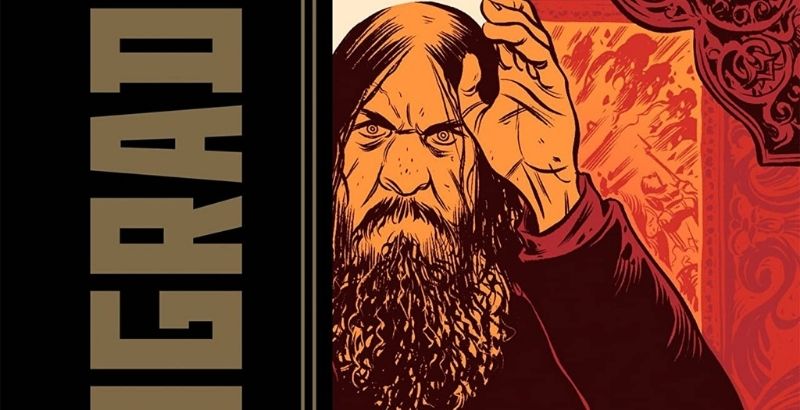One Line is published by Oni-Lion Forge and is written and drawn by Ray Fawkes. Humanity is an intricate tapestry of individuals whose lives grow, intermingle, break, and inevitably end. Where one generation can lead another, the paths it can repeat, or the new places it can discover are both impossible to predict, while at the same time feeling completely inevitable. It is in these complex yet simple narratives that author Fawkes weaves his tale of life.
I’ve heard the phrase simple elegance used many times in my life, but I don’t think it was ever more aptly applied than to One Line. For while the narratives that unfold through the book’s nearly 200 pages are some of the most basic I’ve read, the way Fawkes interweaves the stories is as sublime as it is unique. Not only do the disparent threads of the many lives the book follows come directly into contact in some places, but Fawkes manages to weave a stream of consciousness through the book that joins the plethora of stories together in a way that must be read to believe.
One Line’s unique narrative approach begins with the organization of the book. With each page broken into the iconic three-by-three comic panel grid, Fawkes uses each panel in two-page rotations to tell a unique story. This initially gives the book 18 stories in total. With all these stories running in a two-page rotation, it can sometimes get a little difficult to remember exactly which story is happening at any given time. This is particularly true as the author periodically brings the stories together through shared moments or similar experiences like the outbreak of war or the birth of children. Or, in the most universal of all story elements, the end of the tale.
It is Fawkes’s approach to life’s finality that is most striking in One Line. When the lives of one of the focal characters end, and there is no offspring to continue the tale, the associated panel remains black for the remainder of the book. As the reader progresses, and lives are taken, lost, or snuffed out through circumstances, the pages become increasingly black. The feeling of emptiness grows as the book marches to its own inevitable conclusion. However, I will not speculate on exactly what that conclusion offers the reader here.
Fawkes’s artistic approach is one that’s simplicity and elegance flows beautifully with the story crafted by the creative’s words. Joy, sorrow, hope, despair, and all the other things that make up life pass through these panels in the lovely black and white line art.
Summing up a story like One Line is not an easy thing to do. It is simplistic in its approach and yet nuanced in its narrative. It reads almost like a poem, as the narrative weaves its way through the various lives it depicts. Each story having its own unique cadence, while simultaneously harmonizing with the rest of the lives that exist around them. Some stories are referred to as “slice of life” tales. Here, Fawkes serves us the entire pie in all its messy, beautiful, depressing, and hopeful glory.
One Line is available July 21st wherever comics are sold.
One Line
TL;DR
Summing up a story like One Line is not an easy thing to do. It is simplistic in its approach, and yet nuanced in its narrative. It reads almost like a poem, as the narrative weaves its way through the various lives it depicts. Each story having its own unique cadence, while simultaneously harmonizing with the rest of the lives that exist around them—in all their messy, beautiful, depressing, and hopeful glory.







